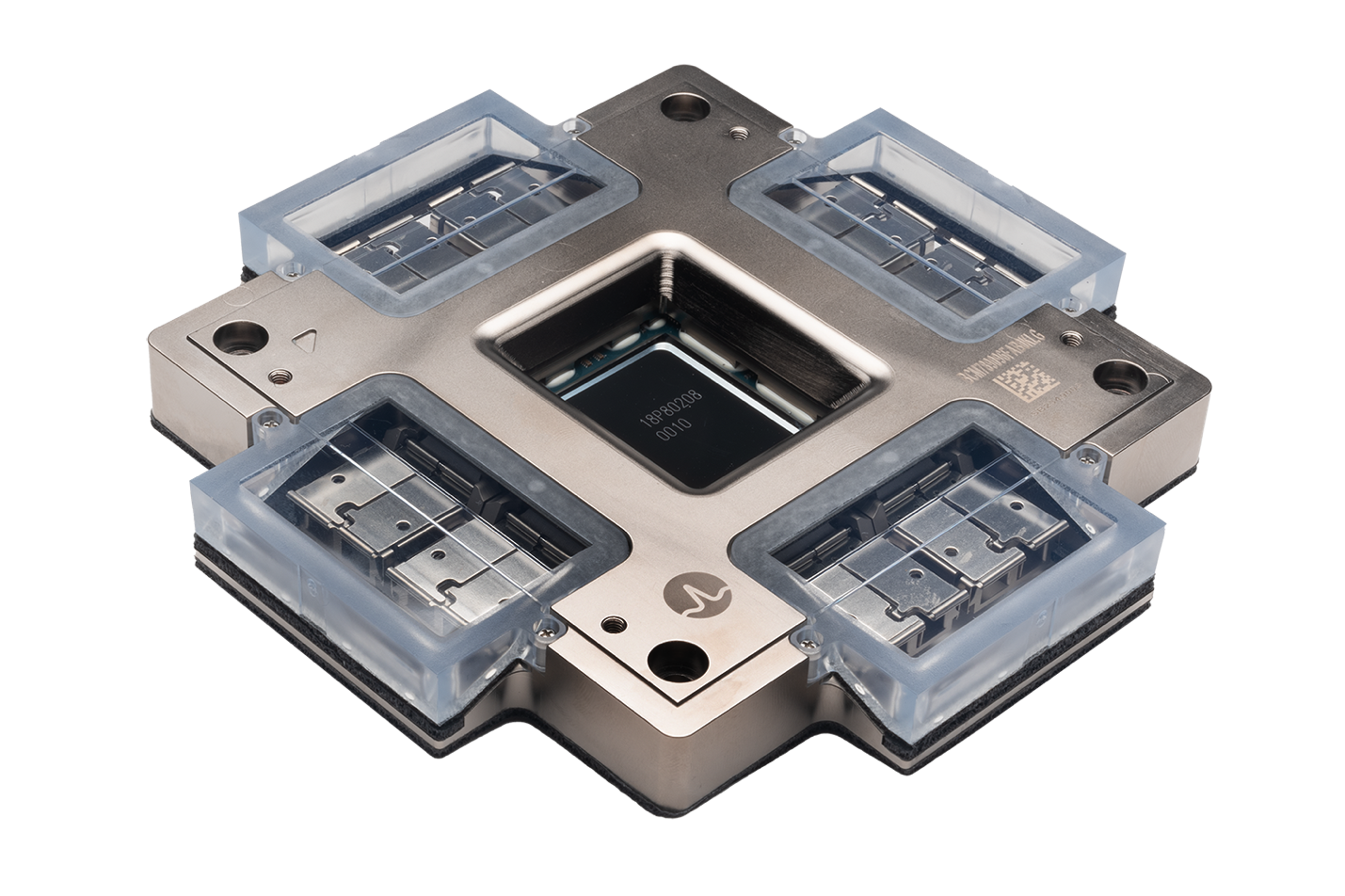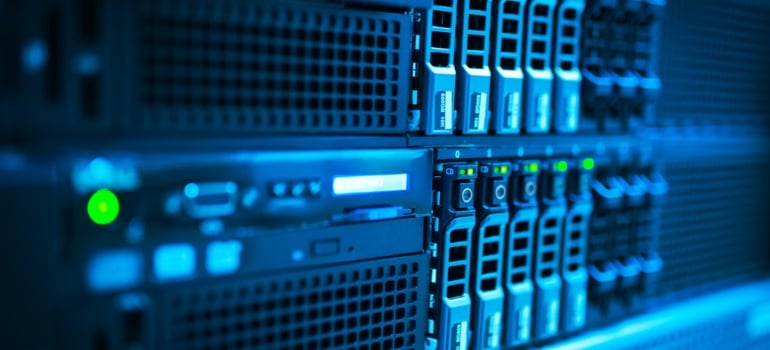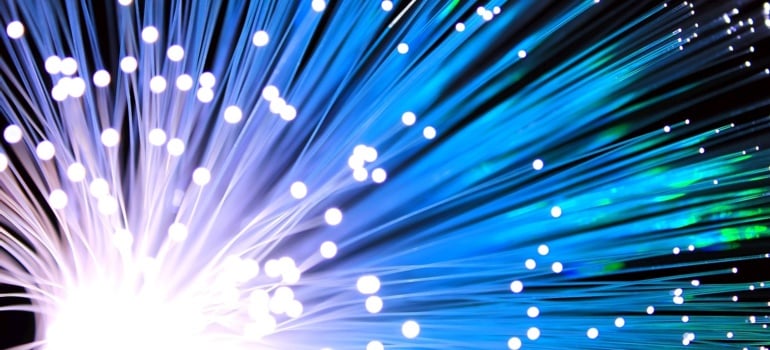When you are building a network that requires long distances, high speeds, and/or heavy bandwidth connections, there is no...
When you are building a network that requires long distances, high speeds, and/or heavy bandwidth connections, there is no question: fiber optic cables win the day.
To understand why, and where copper cables may still be the best solution, it’s important to understand the differences between the two.
Both cable types transmit data, but in very different ways. Copper carries electrical pulses along its metal strands. Fiber optics, on the other hand, carry pulses of light along flexible glass threads. This difference often equates to fiber being the best solution for a new or upgraded network, and therefore being worth the heavier up-front investment.
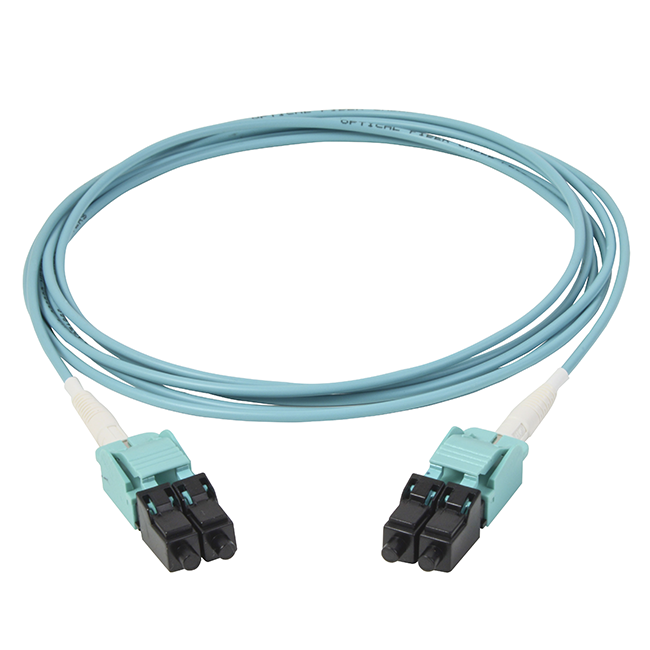
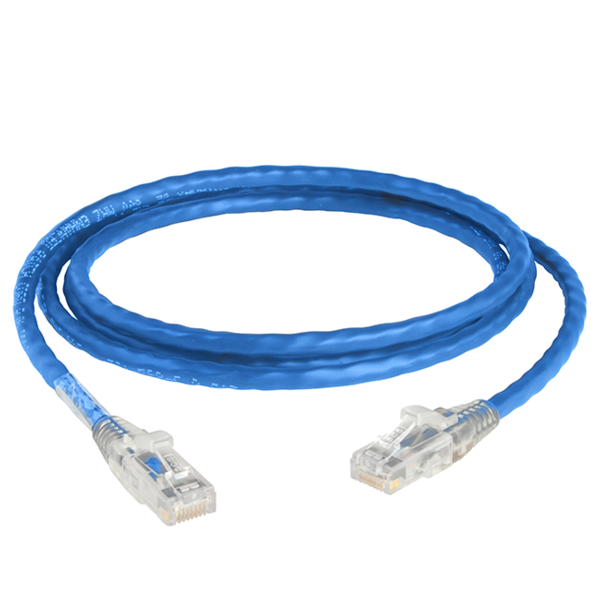
5 Reasons IT Pros Choose Fiber Optic Cables
1. Fiber optic transmission is faster
The standard way to measure data transmission rates is via bandwidth. These days, it is measured in gigabits of data per second (Gbps), or even terabits per second (Tbps).
Copper-based transmissions currently max out at 40 Gbps, whereas fiber optics can carry data at close to the speed of light. In fact, the bandwidth limits imposed on fiber are primarily theoretical, but have been tested to be measurable in hundreds of terabits per second.
2. Fiber optic transmission can cover greater distances
Both copper and fiber-based signaling suffers from attenuation, or a weakening of the waveform signal over distance. However, fiber optic cables can transmit data over much longer distances. In fact,the differences are vast.
Copper cables are limited to lengths of 100 meters (~330 ft.), per governing standards. Longer distances are theoretically possible, but may introduce other problems, preventing copper from being a reliable transmission method at greater distances. Fiber optic cabling, depending on signaling and type of cable, can transmit up to well over 24 miles!
3. Fiber optic cables are impervious to electromagnetic interference (EMI)
By its very nature, the electrical signaling in a copper network connection generates a field of interference around the cables. When you have multiple cables running near one another this interference can bleed into the nearby cables, hindering the desired messaging. This is referred to as crosstalk, and can force expensive retransmission of the message, or even pose security risks.
The light transmission in fiber optics does not generate any EMI, so fiber winds up being more secure, and requires less retransmission, ultimately leading toward a stronger ROI.
4. Save spaceand enhance cable management
Fiber optic strands are extremely narrow. In fact, they’re measured in microns, or millionths of a meter. The most common fiber optic strand is the same diameter as a human hair. Yet as we’ve seen, they can transmit incredible amounts of data, at much higher speeds, over much longer distances than their less narrow copper counterpart. Fiber optic cables do require protective sheathing, which “fattens” them up to a least two millimeters in width.
A single standard category 6 copper cable is roughly four times that width, and carries a fraction of the data. When you use fiber, it takes up much less space and is more flexible (and therefore easier to manage).
There are additional bonuses to this size reduction in cabling mass: the freed-up space enables better circulation of a data center’s cooled air, makes it easier to access the equipment it’s plugged into, and generally just looks much more aesthetically pleasing.
5. Fiber optics are future-proof
Every year the amount of data we consume increases, as do bandwidth requirements. Investing in a modern fiber optic cabling infrastructure will allow your network to operate at future speeds without replacing the cabling.
A solid multifiber backbone in a structured environment will last for years, if not decades, and likely continue to support increasing bandwidth needs. The average lifespan of a copper category specification, on the other hand, is a little over five years.
Also bear in mind that the technologies and equipment that use cabling (switches, signaling optics, servers, etc.) generally tend to decrease in cost as time goes by. It is therefore probable that higher-end connectivity will become even more affordable in the future.
Bonus: Copper CableCounterpoint
Fiber cables arenot a “silver bullet” solution. It is more expensive than copper, and so should be used in the appropriate places. It’s often best suited when interconnecting equipment, in between buildings, and in between floors of a building.
Copper’s lower cost makes it better suited for smaller need applications, like desktops and appliances. Smaller networks, wiring closets, and lower priority traffic all make for good copper applications. Also consider that there may be significant copper already in place for some of these instances, further reducing overall cost.
The Takeaway for IT Pros Choosing Fiber or Copper Cables
The right medium for your network really depends on needs. However, if you have significant bandwidth needs, investing in a robust, scalable infrastructure will pay for itself.
As we’ve seen, fiber optic cabling allows for greater ROI via its faster speeds, increased durability, cleaner signaling, and smaller physical footprint. Copper cables has its applications, and will help reduce upfront cost. A combination approach, with an eye toward future growth will suit you well.
Recent Posts
Introduction: A New Chapter in Optical Connectivit
Low-loss fiber connectivity is essential for...
Starting a data center hardware upgrade is a...
Posts by Tag
- data center (12)
- Fiber Optic Cables (11)
- Cabling (7)
- NETWORKING (6)
- Structured Cabling (6)
- Fiber Optic Cabling (5)
- Fiber Cable (4)
- Networking Cables (4)
- Fiber Cables (3)
- Hardware Security (2)
- IT Infrastructure (2)
- Port Replication (2)
- Sustainability (2)
- AI (1)
- Brocade (1)
- Carbon Offsetting (1)
- Data Security (1)
- FCOE Works (1)
- ICLs (1)
- IT Equipment (1)
- IT Network (1)
- IT infrastructures (1)
- POE (1)
- Switches (1)
- Tapped Holes (1)
- data centers (1)
- hardware (1)
- infrastructure (1)
- storage (1)
- strategy (1)
Popular Posts
Why does the gauge matter in my network’s racks?...
High dB loss in fiber optic cabling...
Let’s look at the construction of fiber optic...



